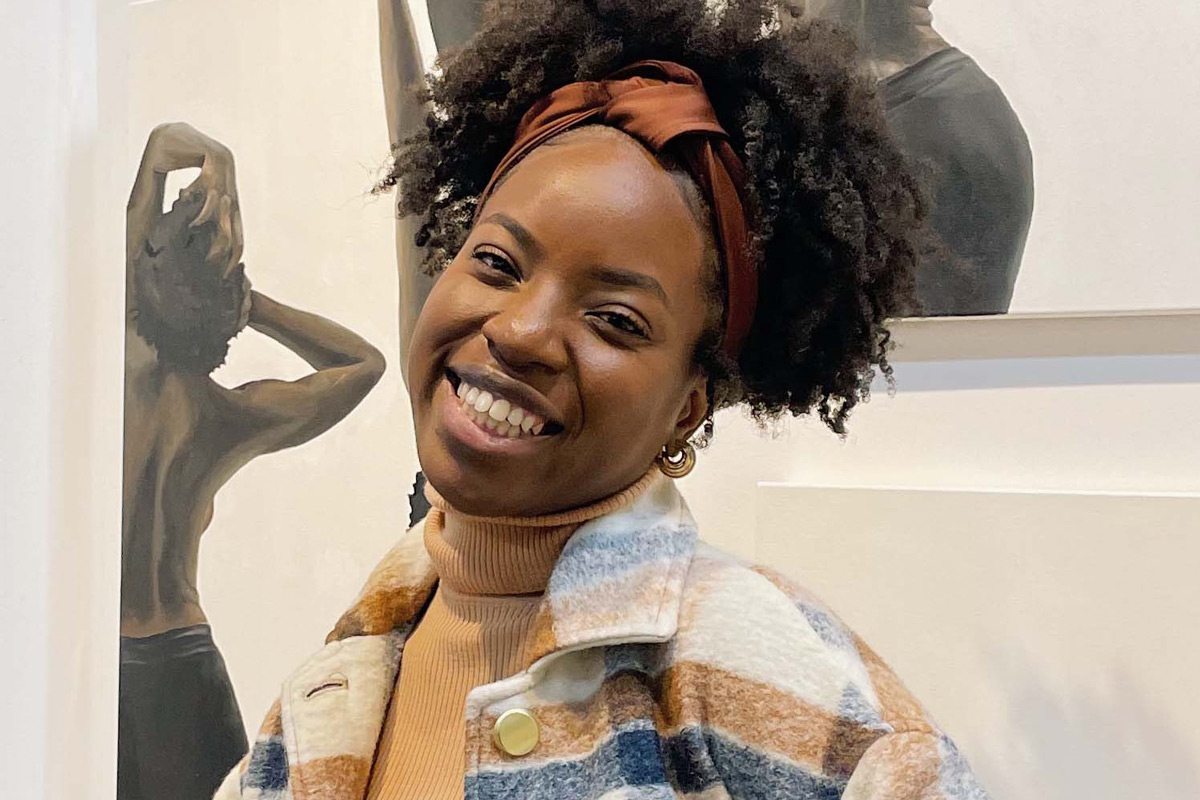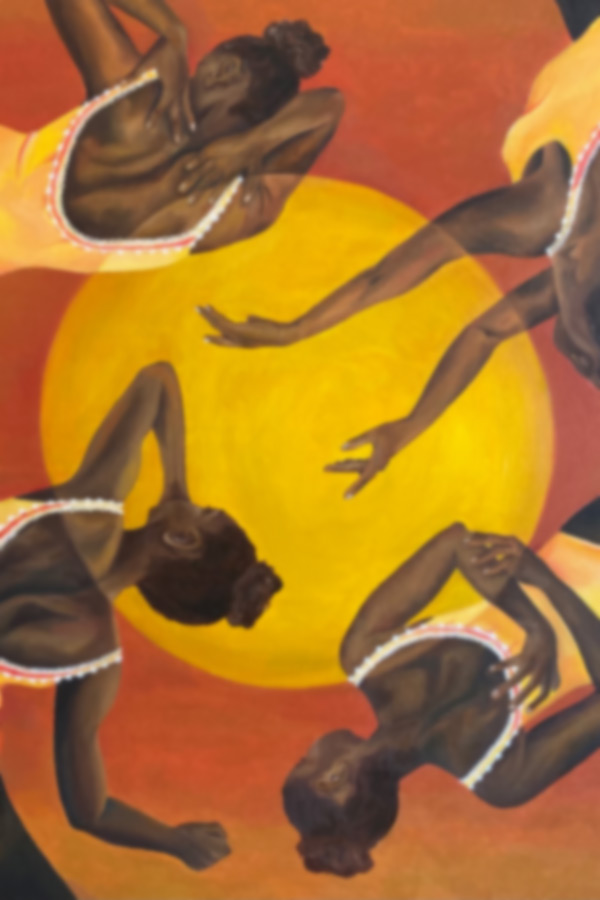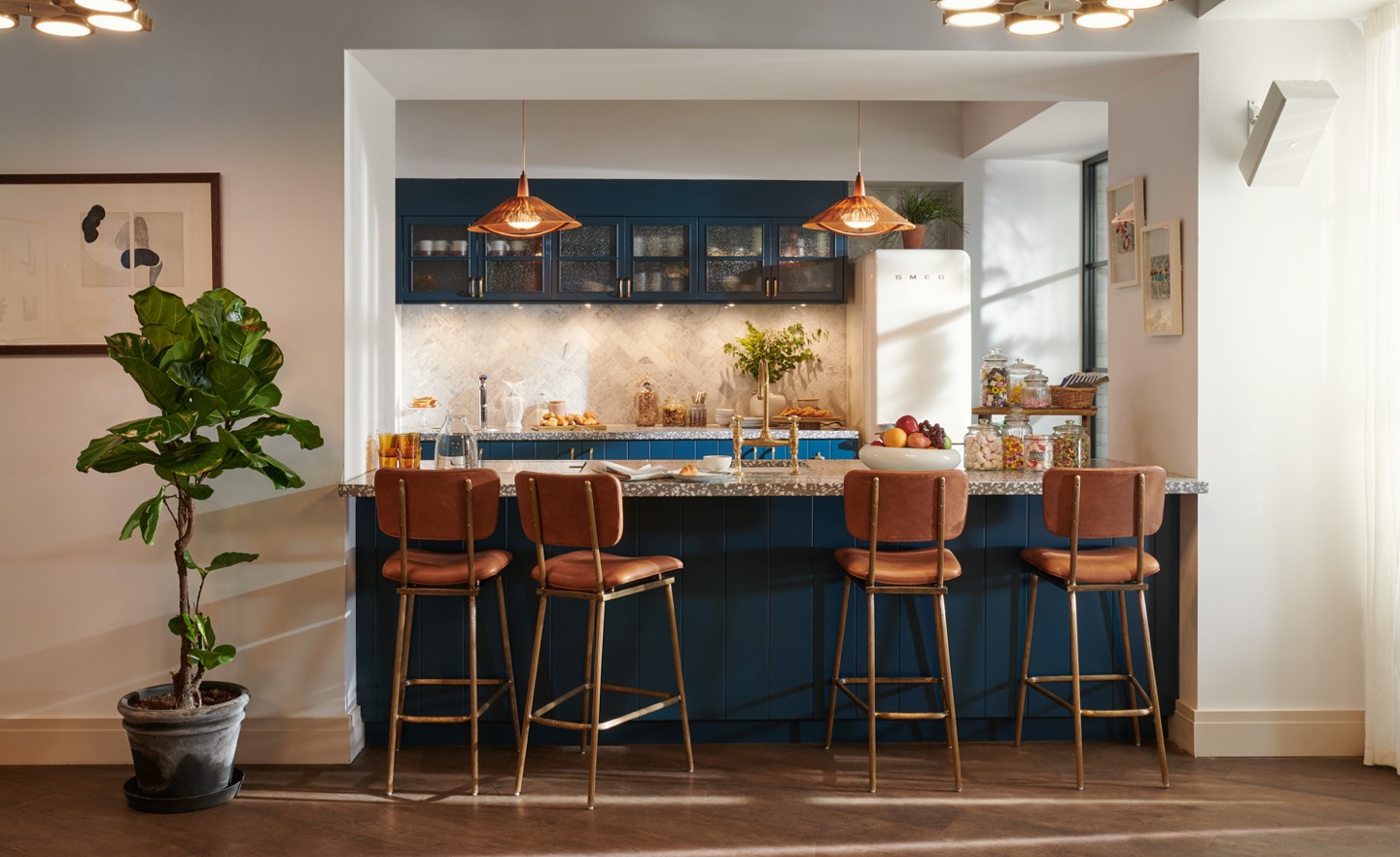Meet the Artist: Kaylee Reynolds

In Williamsburg, you’ll find works from Jamaican born and raised, now New York based, painter and digital artist, Kaylee Reynolds. Inspired by dance and movement, as well as her racial identity, Kaylee employs painting and digital mediums to explore the shapes we create with our bodies, and how this is perceived in the context of various spaces.
What or who do you look to when you have a creative block?
When I find myself having a creative block – it often means I need to take a break and step away from creating at that moment. Sometimes I’ll scroll through Pinterest, I’ll look at the Instagram pages or websites of artists whose work I admire, or I’ll talk through what I’m thinking about with friends and make notes based on those conversations. Other times, I’ll look at old sketches or notes of ideas I wrote down on a whim but never really got around to exploring. Most often though, I really just take a break and allow the creativity to come to me – which can be when I least expect it.
Is there a teacher or mentor who has greatly impacted your life and/or art?
My 5th form–the equivalent of the 11th grade–art teacher in Jamaica, I would say had a huge impact on my life as an artist today. He really encouraged me to develop my skill set in art, but also challenged me in a way that was inspiring. My love for art really started to grow and I wanted to get better at it, whatever that meant at the time. Beyond that, he also opened doors for me to submit my work to be recognized, which I didn’t really consider before, especially because at that age, art wasn’t something I had seriously thought about pursuing. Through him, I ended up applying for a national competition in Jamaica, for which I was the top youth entrant. This was truly a turning point for me, it felt validating to have my work recognized on a national level, in a way that it hadn’t before. Soon after, I started to take art more seriously, which ultimately led to me pursuing it in college as my major, and as a career.
If you didn’t work with your current medium of art, which one would you practice?
Definitely, photography. It gives me the opportunity to see things that I likely wouldn’t see with the naked eye. I also love the idea of capturing a moment in time or in my case – movement, as I am really interested in dance. For a while, I did pursue it as a hobby – and at times I still do. It’s become an important part of my practice as a painter. I often photograph dancers – to the end of using those images for my paintings.
Which city has been your greatest inspiration?
I would say New York has been my greatest inspiration, primarily because it’s where a lot of the ideas in my practice were born. New York is rich with art and culture in many forms – it feels like THE place to pursue a creative career – whether that’s visual art, dance, theatre or film. There’s so much talent on display here, so there’s always something out there to spark creativity. At the same time, I’m constantly thinking about my experience growing up in Jamaica, compared to my experience living in New York as an adult. Both experiences have really shaped me as a person, which in turn, has shaped the ideas in my art practice.
What have you learned about yourself as your work has evolved?
My work portrays black figures as individuals who exist and perform for themselves, who embrace their identities and rarely acknowledge the viewer’s gaze. It explores the shapes we create with our bodies and how this is perceived, by juxtaposing representations of these figures against or in the context of various, usually white, backgrounds and spaces. That said, through my work, as it has evolved, I have learned a lot– and I’m still learning– about my identity. I didn’t think about race growing up as much as I do now. Exploring these ideas in my paintings have helped me to unpack the complex reality of being a minority, specifically being black, and how that manifests itself in different contexts.


Get in Touch
Fill out the below and we’ll get back to you ASAP!
Looking to book a group stay?
Share details about the group and we’ll be in touch ASAP!


